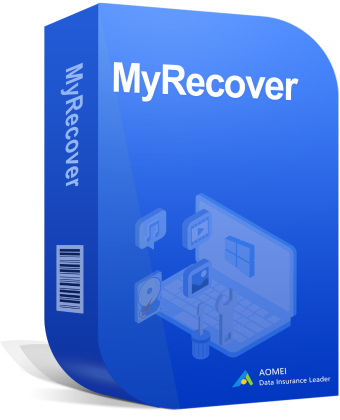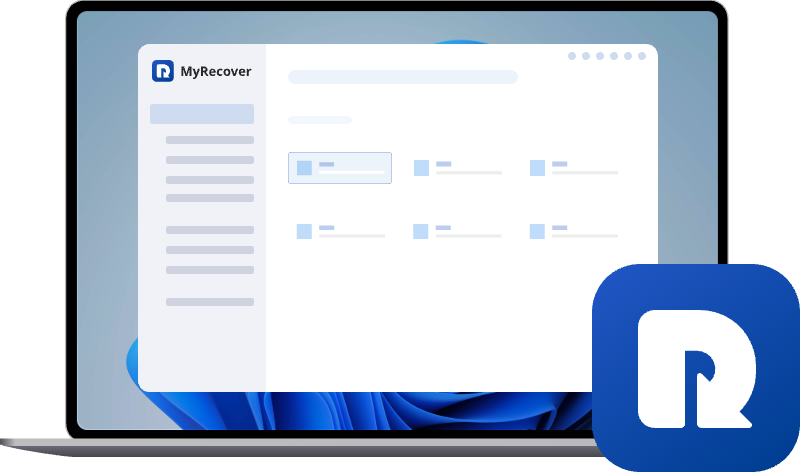How to Recover Files from SD Card Using Command Prompt - 7 Ways
Learn the proven methods for how to recover files from SD card using command prompt. Our tutorial explains using CMD for data retrieval, including instructions on how to recover files from SD card using CMD to restore deleted photos, videos, and documents from damaged or formatted storage media.
Lost Files in SD Card?
It’s a nightmare if you lose your precious files, photos, and videos on the SD card. What should you do to recover files effectively and quickly? Fortunately, it’s possible to recover files from SD card using the command prompt without paying.
The files that many people believe are "gone forever" are frequently still on the card, only hidden or unavailable. Using CMD, you can coax those files back into the open, whether the issue stems from accidental deletion, corruption, formatting, or other situations.
In this post, you will learn how to recover deleted files in SD card using CMD. There are 7 different command prompts and an alternative way. Let’s get started to explore the reasons and solutions.
Why Use Command Prompt to Recover SD Card Data?
There are main reasons to use Command prompt to recover files from SD card, check it now:
⭕ Effective Across Scenarios. Whether you want to know how to recover deleted files in SD card using CMD or tackle corruption, CMD provides different commands tailored to specific problems.
⭕ Secure and Safe. Unlike third-party software, CMD carries no risk of malware or unwanted extras.
⭕ Repair and Recover Simultaneously. Commands like CHKDSK not only recover files but also fix the underlying SD card issues.
⭕ Compatible Everywhere. Works across nearly all versions of Windows: 7, 8, 10, and 11.
These advantages explain why so many users turn to CMD first. Now, let's move into the nitty-gritty: the multiple ways you can use it for recovery.
7 Ways to Recover Files from SD Card using Command Prompt
In this part, you will learn different command prompts to recover files from SD card according to the different situations. Find the proper CMD command to recover easily.
Way 1. Recover Command
Sometimes files are hidden rather than deleted. The Recover command allows you to retrieve readable data from a disk that's become inaccessible. However, you can only use the Recover utility in Windows 10/11, Windows Server 2016, 2019, 2022, and 2025. The recovery is not guaranteed to be successful; however, some severe forms of data corruption are unrecoverable.
1. Insert your SD card into the computer.
2. Open Command Prompt as administrator.
3. Type the following commands one by one:
- G:
- recover G:\filename
Replace G with your SD card's drive letter, and "filename" with the file you want; filename is required.
4. Hit Enter and let CMD attempt the recovery.
This works well when you know the exact name of the file, but it's not opening or showing properly.
Way 2. Undelete Command (Windows 95/98)
If files were recently deleted, Windows (Windows 95, 98) once supported an undelete function. Although it's limited in modern systems, some environments still recognize it. Learn how to recover a formatted SD card using the command prompt, Undelete. Try these steps:
1. Launch Command Prompt.
2. Input:
undelete X:\filename
Replace with your drive letter and file name.
3. Press Enter.
While this doesn't work in every case, it's worth a try before moving to heavier commands, especially for quick deletion issues.
Way 3. Attrib Command
The attrib command is one of the most popular solutions for users searching for how to recover files from SD card using CMD. It removes hidden, read-only, or system attributes that may be preventing your files from appearing.
1. Open Command Prompt as administrator.
2. Type:
attrib -h -r -s /s /d E:\*.* (Replace E with the SD card drive letter)
3. Hit Enter.
4. Wait for CMD to unhide the files.
Wait for the process to finish. Your deleted files should now reappear in their original folders.
Way 4. Chkdsk Command
Corruption is a frequent culprit behind inaccessible cards. Chkdsk scans the SD card, repairs the file system, and retrieves files simultaneously. If you're wondering how to recover files from a corrupted SD card using CMD, this is the way to go.
1. Insert the corrupted SD card.
2. Open Command Prompt in administrator mode.
3. Type:
chkdsk g: /f /r
- Replace g with your card's drive letter.
- The /f flag fixes errors.
- The /r recovers readable data from bad sectors.
4. Press Enter and allow the process to run.
This method is a lifesaver for corruption-related errors.
Way 5. Diskpart
When formatting or partition issues cause trouble, Diskpart helps manage disks and partitions directly. If you're curious about how to recover formatted SD card using command prompt, Diskpart plays a role in repairing the card so recovery tools can work better.
1. Open Command Prompt as administrator.
2. Enter:
diskpart
3. Then type:
list disk
select disk X
clean
create partition primary
select partition Y
Active
Format fs=ntfs
assign letter=G
exit
Replace X, Y, and G with the disk/volume numbers and new drive letter.
By reassigning letters and cleaning partitions, the SD card often becomes accessible again, paving the way for file retrieval.
Way 6. Xcopy Command
If your SD card shows files but refuses to copy them, the xcopy command can force data transfer.
1. Open Command Prompt.
2. Type:
xcopy G:\*.* E:\ /s /h
Replace G with the SD card and E with your destination folder.
3. Press Enter to begin copying.
This is effective for bulk transfers, especially when dealing with hidden or protected files.
Way 7. Windows File Recovery
For modern systems like Windows 10 and 11, Microsoft's Windows File Recovery is a command-line utility designed exactly for this purpose.
1. Download Windows File Recovery from the Microsoft Store.
2. Open Command Prompt as administrator.
3. Input the following command:
winfr F: E: /regular
Replace F with the SD card and E with the recovery destination.
4. Hit Enter to run the command and let it scan.
This tool gives a much higher success rate for how to recover deleted files in SD card using CMD compared to older commands.
Recover Files from SD Card If CMD is Not Working
Sometimes CMD cannot recover files from SD card. What should you do? Maybe it’s time to find professional data recovery software, MyRecover, to restore files effectively.
With MyRecover, you can enjoy the following advantages:
- 99% Recovery Rate. MyRecover provides the highest recovery rate in the market.
- Recover Unlimited Data. You can recover as many files as needed.
- Preview Files Before Recovery. You can preview the file to find the right one instead of recovering all files to identify the file.
- 500+ Devices. You can recover files from SD card, HDD, SSD, USB flash drive, camera, PS3/4, music player, and so on.
- Recover Data from 500+ Situations. You can recover files from a formatted hard drive, deleted partition, crashed computer, and more.
How to recover files from an SD card without a command prompt? Try MyRecover now:
1. Download and install MyRecover on your computer. Insert the SD card into your PC, and ensure it can be detected.
2. Launch MyRecover and select USB/SD Card Recovery on the left.
3. Hit Scan while hovering over the SD card, hit OK when it’s finished.
4. Find the missing files, preview and tick them, hit Recover.
- Note:
- You can also use file type, file size and filename to filter them directly and quickly.
5. Select another location, and hit Open to save these recovered files instead of the original location.
The advantage here is simplicity. Unlike CMD, which requires technical precision, MyRecover offers a visual interface and deeper scanning algorithms, making it ideal for tougher cases like full formatting or heavy corruption.

- Recover Deleted Files Easily with Simple Clicks
- 1000+ File Formats Supported
- Support HDD, SSD, External Hard Drive, USB Drive, SD Card, etc.
- Quickly Find Files Using File Types, Name, Size, etc.
- Preview Files Before Recovering
- Recover Unlimited Data
The End
Losing files on an SD card doesn't have to feel like the end of the world. With the right commands, you can easily master how to recover files from SD card using the command prompt and handle a wide range of issues—from accidental deletion to corruption and formatting errors. Commands like attrib, chkdsk, and xcopy are more powerful than most users realize, and with patience, they can restore access to precious data.
Still, when CMD falls short, tools like MyRecover step in as a reliable safety net, ensuring nothing is lost forever. By keeping these solutions in your toolkit, you’ll never have to panic about lost files again. With MyRecover, you can also recover files from a crashed computer, because it allows you to create a bootable media to boot up the computer, then use MyRecover to recover files to another external device.


